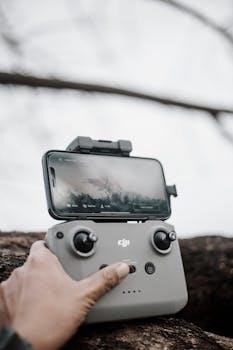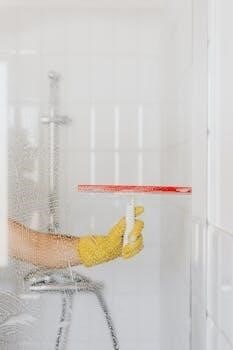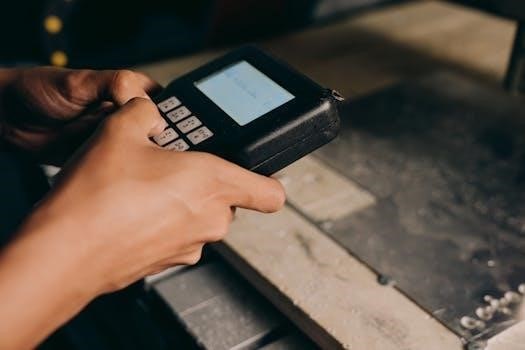Chicco KeyFit 30 User Manual⁚ A Comprehensive Guide
Welcome to your comprehensive resource for the Chicco KeyFit 30! This guide simplifies using your car seat‚ offering easy access to manuals and instructions. Discover essential safety guidelines‚ installation tips‚ and maintenance advice for a secure and confident journey.
The Chicco KeyFit 30 infant car seat is a popular choice among parents‚ known for its safety features and ease of use. Designed for infants weighing between 4 and 30 pounds and up to 30 inches in height‚ it provides a secure and comfortable environment for your newborn. This user manual provides a detailed overview‚ ensuring correct installation and usage.
This car seat is JPMA certified‚ demonstrating its adherence to safety standards. Its compatibility with Chicco strollers (excluding the Liteway Stroller) creates a convenient travel system. This introduction will guide you through the KeyFit 30’s key features‚ emphasizing the importance of following all instructions for optimal safety.
Whether you are a first-time parent or an experienced caregiver‚ understanding the functionalities of the KeyFit 30 is crucial. From harness adjustments to proper cleaning techniques‚ this comprehensive guide equips you with the knowledge to use the KeyFit 30 confidently‚ prioritizing your child’s well-being on every journey. Remember to store the user guide in the designated compartment for future reference.
Weight and Height Limits for the Chicco KeyFit 30
Understanding the weight and height limits of the Chicco KeyFit 30 is crucial for ensuring your child’s safety and comfort during car rides. This infant car seat is specifically designed for babies weighing between 4 and 30 pounds. Exceeding these weight limits can compromise the car seat’s ability to protect your child in the event of a collision.

In addition to weight‚ height is also a critical factor. The KeyFit 30 is suitable for infants up to 30 inches tall. It’s essential to monitor your child’s growth and transition to a larger car seat once they reach either the maximum weight or height limit‚ whichever comes first. Using the car seat beyond these limits can reduce its effectiveness and put your child at risk.
Always refer to the user manual for detailed instructions and safety guidelines regarding weight and height limitations. Regularly check your child’s measurements to ensure they are within the recommended range for the Chicco KeyFit 30. Prioritizing your child’s safety means being vigilant about these limits and making timely adjustments to their car seat as they grow.
Installation Options⁚ LATCH and Vehicle Belt
The Chicco KeyFit 30 offers two primary installation methods to accommodate various vehicle configurations⁚ LATCH (Lower Anchors and Tethers for Children) and the vehicle’s seat belt system. Both methods provide secure installation when used correctly‚ so understanding each option is essential.

The LATCH system is designed for easy installation‚ utilizing built-in lower anchors in most modern vehicles. To use LATCH‚ attach the KeyFit 30’s LATCH connectors to these anchors until you hear a click. Tighten the LATCH strap to ensure a snug fit‚ minimizing movement. Always consult your vehicle’s manual to confirm LATCH compatibility and anchor locations.
Alternatively‚ you can install the KeyFit 30 using your vehicle’s seat belt. Route the seat belt through the designated belt paths on the car seat base‚ ensuring it lies flat and isn’t twisted. Lock the seat belt by pulling it all the way out and then slowly retracting it until tight. For added security‚ some vehicles require using a locking clip to prevent the seat belt from loosening.
Regardless of the chosen method‚ always verify that the car seat is firmly installed with minimal movement (less than one inch in any direction). Refer to the Chicco KeyFit 30 user manual for detailed step-by-step instructions and visual aids to ensure proper installation and your child’s safety.
Using the Newborn Insert
The Chicco KeyFit 30 includes a newborn insert designed to provide optimal support and positioning for smaller infants. This insert is crucial for babies weighing between 4 and approximately 11 pounds‚ ensuring a snug and secure fit within the car seat. The insert helps maintain proper spinal alignment and prevents the baby from slumping‚ which can compromise breathing.
To use the newborn insert‚ simply place it inside the car seat‚ ensuring it’s properly aligned. The insert should fit snugly against the car seat’s back and sides‚ creating a secure and comfortable space for the infant. Make sure the harness straps are positioned correctly‚ going over the baby’s shoulders and through the appropriate slots. Adjust the harness tightness to ensure a snug fit without being too restrictive.
As your baby grows and gains weight‚ you’ll need to remove the newborn insert to provide more space. Generally‚ once your baby reaches around 11 pounds or shows signs of outgrowing the insert‚ it’s time to take it out. Removing the insert is straightforward⁚ simply lift it out of the car seat. Ensure the harness straps are adjusted accordingly to maintain a secure and comfortable fit for your growing child.
Always refer to the Chicco KeyFit 30 user manual for specific instructions and guidelines on using the newborn insert‚ as well as for determining when it’s appropriate to remove it based on your baby’s individual needs.
Harness Adjustment and Chest Clip Positioning
Proper harness adjustment and chest clip positioning are paramount for your child’s safety in the Chicco KeyFit 30. The harness straps should be positioned at or below your child’s shoulders when the car seat is in the rear-facing position. To adjust the harness height‚ locate the harness adjuster at the front of the seat. Press the adjuster button and simultaneously pull the harness straps to loosen or tighten them as needed.
Ensure the harness straps lie flat against your child’s body without any twists or slack. A snug harness is crucial to restrain your child effectively during a sudden stop or crash. You should be able to fit no more than one finger snugly between the harness and your child’s collarbone. The chest clip plays a vital role in keeping the harness straps properly positioned on your child’s shoulders.
The chest clip should be positioned at armpit level‚ ensuring it sits securely on your child’s chest. This placement prevents the harness straps from sliding off your child’s shoulders‚ maintaining the integrity of the restraint system. Always double-check the harness tightness and chest clip position each time you place your child in the car seat to ensure optimal safety. Refer to the Chicco KeyFit 30 user manual for detailed instructions and diagrams to guide you through the adjustment process.
Handle Positions and Carrier Usage

The Chicco KeyFit 30 carrier handle offers multiple positions designed for various uses‚ enhancing convenience and safety. Understanding these positions is crucial for proper carrier usage. The handle has three locked positions⁚ carry‚ reclined‚ and anti-rebound. To adjust the handle‚ press both buttons near the pivot points simultaneously and rotate the handle to the desired position.
The carry position is for transporting the carrier outside the vehicle. Always ensure the handle is securely locked in this position before lifting and carrying the carrier. The reclined position is used when the carrier is installed in the car seat base. This position helps stabilize the carrier and provides added protection in the event of a crash. The anti-rebound position‚ when applicable‚ is designed to prevent the carrier from rebounding in a collision‚ offering enhanced safety.
When using the carrier without the base‚ such as in a shopping cart or on the ground‚ always place it on a stable‚ flat surface. Never leave the carrier unattended with a child inside. Ensure the handle is locked in the appropriate position to prevent accidental movement or tipping. Regularly inspect the handle and its locking mechanisms for any signs of damage or wear. Refer to the user manual for detailed illustrations and instructions on handle positioning and carrier usage.
Cleaning and Maintenance of the Car Seat
Maintaining the cleanliness and integrity of your Chicco KeyFit 30 car seat is essential for both hygiene and safety. Regular cleaning and proper maintenance will ensure the car seat remains in optimal condition‚ providing a safe and comfortable environment for your child.
For fabric components‚ machine wash them separately in cold water on a delicate cycle using a mild detergent. Avoid using bleach‚ as it can damage the fabric and compromise its fire-retardant properties. Drip dry the fabric components; do not use a machine dryer. For the car seat shell and plastic parts‚ wipe them down with a damp cloth and mild soap. Ensure all soap residue is removed to prevent skin irritation.
The harness straps can be spot-cleaned with a damp cloth and mild soap. If the harness is excessively soiled or damaged‚ contact Chicco to order a replacement. Never remove the harness or any harness components from the carrier for cleaning or any other reason. Periodically inspect the car seat for any signs of wear‚ damage‚ or loose parts. Check the buckle and other parts for hot surfaces‚ especially after the car has been parked in direct sunlight. Store the car seat in a cool‚ dry place when not in use.
FAA Approval for Aircraft Use
The Chicco KeyFit 30 is certified for use on commercial aircraft‚ providing a familiar and secure environment for your child during air travel. This FAA approval ensures that the car seat meets specific safety standards required for use in airplanes‚ giving parents peace of mind during flights.
Before traveling‚ it is essential to contact your airline to discuss their specific requirements and policies regarding car seat usage. Airlines may have specific seating arrangements or restrictions on the types of car seats allowed. Be sure to confirm these details in advance to avoid any issues during boarding.
When installing the KeyFit 30 on an aircraft‚ follow the instructions provided in the user manual. Typically‚ the car seat should be installed in a window seat to avoid obstructing other passengers. Secure the car seat using the aircraft’s seat belt‚ ensuring it is tightly fastened. Always refer to the airline’s crew for assistance and clarification on any specific procedures. Utilizing the Chicco KeyFit 30 on aircraft allows your child to remain in a familiar and safe restraint system.
Storage of the User Manual
The Chicco KeyFit 30 features a dedicated storage compartment for the user manual‚ ensuring that essential instructions are always readily accessible. This compartment is conveniently located on the base of the car seat‚ allowing for quick reference whenever needed. Keeping the manual in this designated spot prevents misplacement and ensures that critical information is available for installation‚ adjustment‚ and troubleshooting.
The storage compartment is designed to protect the manual from damage‚ keeping it clean and legible. This is particularly useful for maintaining the manual’s condition over time‚ especially if the car seat is used frequently. Besides the manual‚ the compartment can also hold small‚ lightweight items that might be needed during travel‚ such as registration cards or emergency contact information.
Regularly checking the storage compartment ensures that the manual remains in place and that no other items obstruct its accessibility. This simple practice can save time and frustration when needing to consult the manual for specific instructions or guidelines. By utilizing the storage compartment effectively‚ parents can maintain a well-organized and user-friendly car seat system.

Troubleshooting and Customer Support
Encountering issues with your Chicco KeyFit 30 is not uncommon‚ and Chicco provides comprehensive support to address any concerns. The first step in troubleshooting is consulting the user manual‚ which contains solutions to frequently asked questions and common problems. Should the manual not provide the necessary assistance‚ Chicco’s customer service is readily available to offer further guidance.
Chicco’s customer support can be reached via phone or through their website‚ where you can find helpful articles‚ FAQs‚ and contact forms. When contacting customer service‚ it’s beneficial to have your car seat’s model number and manufacturing date handy‚ as this information helps the support team provide accurate and efficient assistance. Common issues include difficulties with installation‚ harness adjustment‚ or base compatibility.
In addition to direct support‚ online forums and communities dedicated to parenting and child safety often provide valuable insights and solutions shared by other Chicco KeyFit 30 users. Remember to register your car seat to receive recall notifications and important safety updates. Chicco is committed to ensuring customer satisfaction and the safe use of their products‚ so don’t hesitate to seek their expertise when needed.
